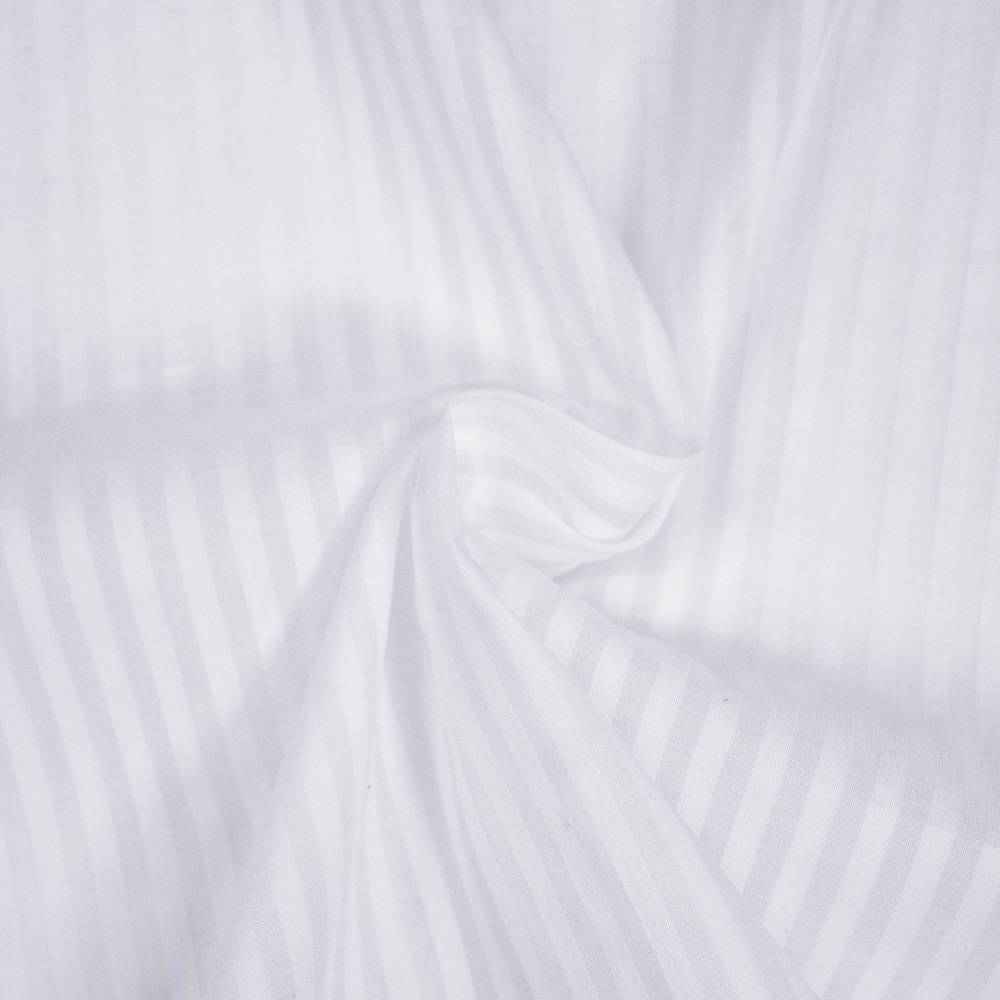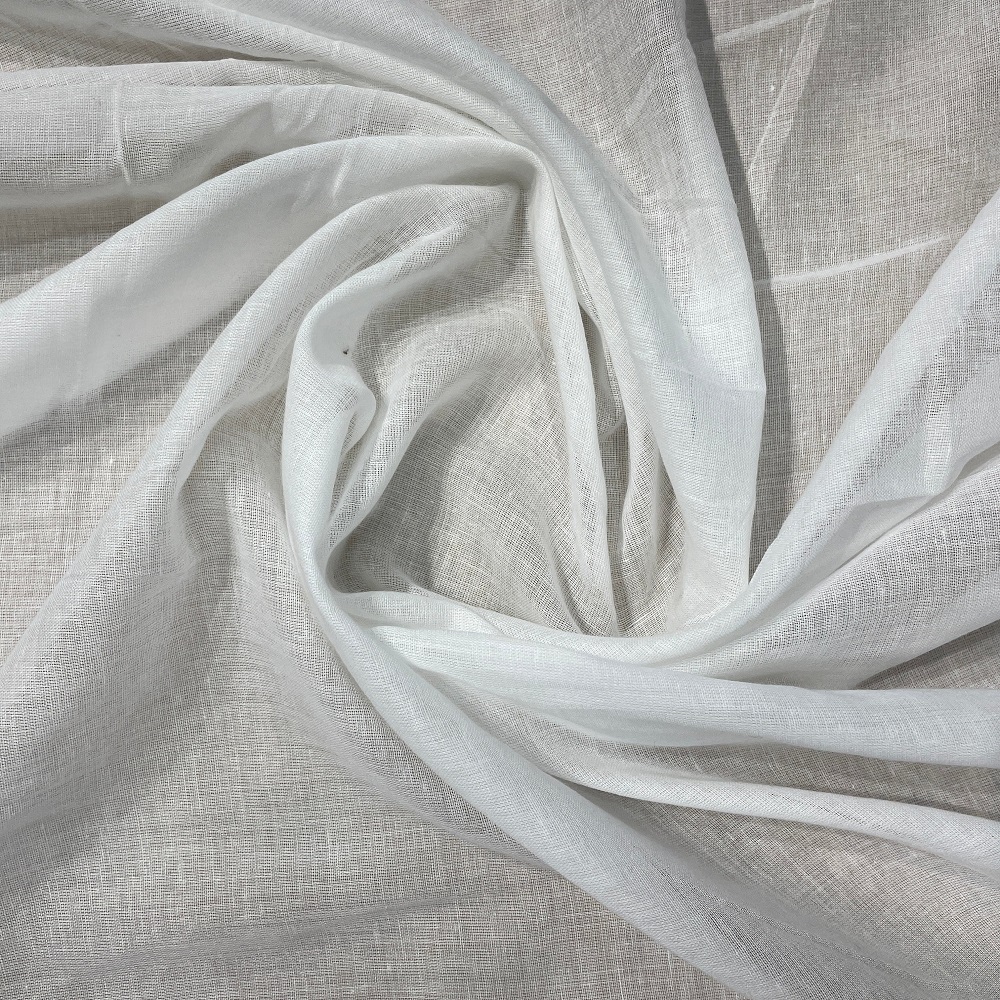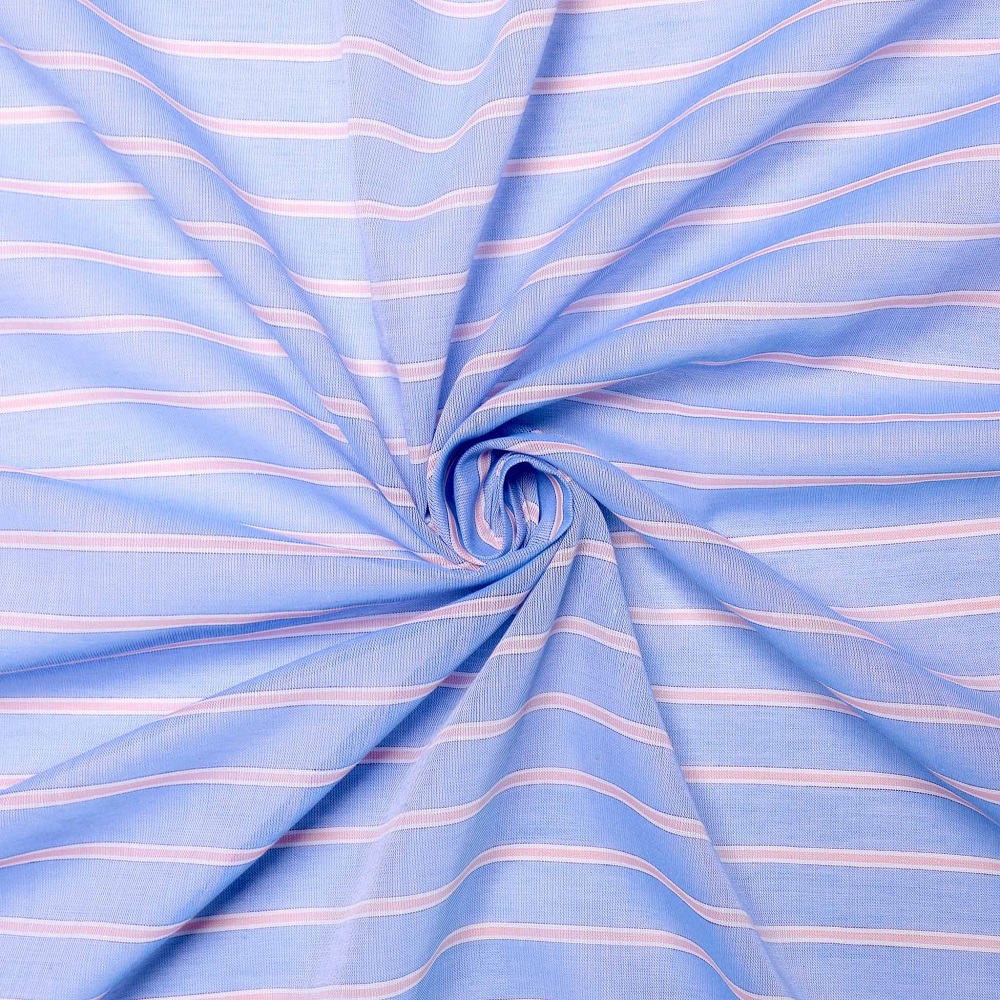Introduction to Cotton Voile Fabric
Cotton voile fabric is a lightweight, semi-sheer material. Its name comes from French, meaning ‘veil.’ It’s known for its softness, breathability, and slight sheen. Crafted from cotton fibers, voile is both natural and durable. This fabric’s airy quality makes it perfect for warm climates and summer wear. Designers often use cotton voile for blouses, dresses, and curtains. It’s also a top choice for layering in fashion because of its light transparency. When choosing cotton voile fabric, consider its weave, texture, and finish. Good quality voile is soft yet strong, and drapes beautifully. It should feel smooth to the touch without any stiffness. Cotton voile fabric offers an elegant option for many sewing projects. With its delicate appearance and comfort, it adds a touch of class to any garment or home decor.

Key Characteristics of Cotton Voile
When shopping for cotton voile fabric, understanding its key features is crucial. Here are the most significant characteristics of cotton voile:
- Lightweight and Airy: Cotton voile is exceptionally light, which allows air to flow through easily. This makes it comfortable to wear in warm weather.
- Soft and Smooth: The fabric feels soft against the skin, thanks to its fine threads and high thread count. Its smoothness is part of its appeal in fashion and home decor.
- Semi-Sheer Transparency: With its semi-transparent nature, cotton voile adds a delicate and elegant look. This sheer quality is especially desirable for layering in garments or for window treatments that let in light.
- Durability: Despite its lightness, cotton voile is surprisingly durable. The tightness of the weave contributes to its strength, making it suitable for everyday wear and use.
- Drapability: It has a wonderful drape, which allows it to flow and hang gracefully. This characteristic is especially valued in dresses and curtains.
- Breathability: Cotton voile is breathable, which means it wicks away moisture and keeps you cool. This feature is ideal for summer clothing.
Cotton voile’s unique set of characteristics makes it a versatile fabric, beloved by designers and sewists for a variety of applications. Remember these traits when considering cotton voile for your next project to ensure you choose the right fabric for your needs.
Benefits of Using Cotton Voile in Sewing Projects
Choosing cotton voile fabric for sewing projects offers several perks. It stands out for its versatility and ease of use, especially in creating clothing and home decors that breathe elegance and comfort. Let us delve into its benefits to understand why it makes for an ideal choice:
- Enhanced Comfort: Cotton voile, being breathable, is perfect for making summer attire. It keeps the wearer cool, making it a favorite for hot weather pieces.
- Elegant Draping: The natural drape of voile adds fluidity to garments. Dresses and skirts made of voile flow with grace due to its soft structure.
- Versatile for Layering: Because it’s semi-sheer, voile works wonders in layered outfits. It layers without adding bulk, giving a light and airy feel to the garment.
- Ease of Handling: For sewists, cotton voile is a joy to work with. Despite its delicate appearance, it’s relatively sturdy and easy to cut and sew.
- Superior Finish: Garments of cotton voile reveal a hint of sheen, offering a high-end finish. This quality makes them stand out in both casual and formal settings.
- Light Filtering Qualities: In home decor, voile’s semi-transparency allows for privacy while softly diffusing daylight. This feature is perfect for window treatments.
- Durability: The fabric holds up to washing and wear, considering its fine weave. This means creations stand the test of time, retaining their beauty for longer.
These benefits show why cotton voile fabric is a popular choice among sewing enthusiasts. From fashion to furnishings, it provides performance, beauty, and lasting appeal.

Factors to Consider When Selecting Cotton Voile
When choosing cotton voile fabric, it’s essential to weigh several factors to ensure the best fit for your project. These aspects will impact the usability, durability, and overall aesthetic of your finished work:
- Weave Density: Check the closeness of the weave. A tight weave means more durability.
- Fabric Weight: Though lightweight, weights can vary. Decide if you need ultra-light voile or something slightly heftier.
- Color and Pattern: Voile comes in many designs. Select one that complements your project’s style.
- Width of Fabric: Voile is sold in different widths. Make sure to pick a width that suits your pattern requirements.
- Shrinkage Potential: Like many cotton fabrics, voile can shrink. Pre-wash it before cutting and sewing.
- Purpose: Consider what you are making. Delicate items work well with finer voile, while something like curtains may need a sturdier selection.
Always remember these factors when you’re at the fabric store or browsing online. They will guide you to a cotton voile fabric that’s just right for your sewing endeavours.
The Impact of Thread Count and Fiber Quality in Voile Fabric
Thread count and fiber quality deeply influence cotton voile fabric’s performance and feel. Let’s break down what these mean:
- Higher Thread Count: A high thread count indicates more threads per square inch, enhancing the fabric’s softness and fineness. For cotton voile, a higher thread count usually means a smoother, more luxurious feel.
- Premium Fiber Quality: The quality of the cotton fibers used in making voile affects its durability and texture. Long-staple cotton fibers result in a stronger, silkier fabric. Cotton voile made from premium fibers is less likely to pill and feels more comfortable against the skin.
Recognizing the impact of these factors is crucial when choosing voile for your sewing projects. A good balance of high thread count and superior fiber quality will ensure your cotton voile fabric maintains its beauty and function over time, giving you a finished product that feels as delightful as it looks.
Caring for Cotton Voile Garments and Textiles
Maintaining the quality and look of cotton voile fabric requires proper care. Following the right steps will preserve its softness, drape, and color over time. Here’s how to care for your cotton voile garments and textiles:
- Gentle Washing: Use a gentle cycle and mild detergent to wash cotton voile. Harsh chemicals can damage the fabric’s fibers.
- Cool Water: Opt for cool water when washing to prevent shrinkage and fading.
- Avoid Wringing: Don’t wring out voile fabrics. This can cause wrinkles and distort the delicate weave.
- Air Dry: Hang cotton voile items to air dry. Direct sunlight may lead to fading, so choose a shaded area if possible.
- Light Ironing: If needed, iron cotton voile on a low heat setting. High heat can scorch the lightweight material.
- Proper Storage: Store voile garments hung or folded in a cool, dry place to prevent mildew and discoloration.
By treating cotton voile with care, you ensure your garments and home textiles retain their beauty and longevity. Always check the care label for specific instructions related to the cotton voile fabric you have.

Top Uses for Cotton Voile in Fashion and Home Decor
Cotton voile fabric has found its way into many areas of fashion and home decor. Its unique properties lend themselves to a variety of applications. Here are some of the top uses for cotton voile that highlight its versatility and appeal:
- Light Summer Clothing: Ideal for hot climates, designers use cotton voile to create breezy dresses, skirts, and blouses that feel cool and comfortable.
- Elegant Scarves and Accessories: The translucent nature of voile makes it perfect for delicate scarves and shawls that add a touch of elegance without heaviness.
- Lined Garments: Cotton voile often serves as lining for garments, providing a breathable layer that feels soft against the skin.
- Wedding Attire: Due to its soft drape and lightweight, voile is a favorite for wedding gowns and bridesmaid dresses where a floaty, romantic look is desired.
- Layering in Fashion: The semi-sheer quality of cotton voile works well for layered outfits, offering depth without added bulk.
- Curtains and Draperies: In home decor, voile’s light-filtering qualities make it an excellent choice for curtains that offer privacy while letting in gentle light.
- Bed Canopies: Create a dreamy, airy bedroom atmosphere with bed canopies made from cotton voile.
- Table Linens: Elegant tablecloths and napkins of cotton voile can elevate the dining experience with a sophisticated touch.
Cotton voile fabric’s adaptability in both fashion and home decor ensures it remains a popular choice for numerous creative projects. The lightness, sheer quality, and beautiful drape of voile make it a go-to fabric for designers and homemakers alike.
Comparing Cotton Voile with Other Lightweight Fabrics
When deciding on fabrics for your projects, you may consider alternatives to cotton voile. Lightweight fabrics like cotton lawn, silk chiffon, and polyester georgette have distinct qualities. Here’s how cotton voile compares to these materials:
- Cotton Lawn: Cotton lawn is similar to voile but has a crisper feel. Lawn is very fine and high-thread-count, but not as sheer as voile. It’s excellent for crisp, detailed garments.
- Silk Chiffon: Silk chiffon is sheerer and lighter than cotton voile. It drapes beautifully but can be tricky to handle because of its delicate nature. Chiffon adds elegance, perfect for formal wear.
- Polyester Georgette: Georgette is heavier and less transparent than voile. It’s known for its crepe-like texture. Georgette resists creasing and suits flowing dresses or blouses.
Each fabric serves a purpose depending on the desired outcome of your project. While cotton voile fabric offers breathability and softness, other fabrics like lawn, chiffon, and georgette bring crispness, sheerness, and texture, respectively. Always consider your project’s needs to choose the best lightweight fabric.